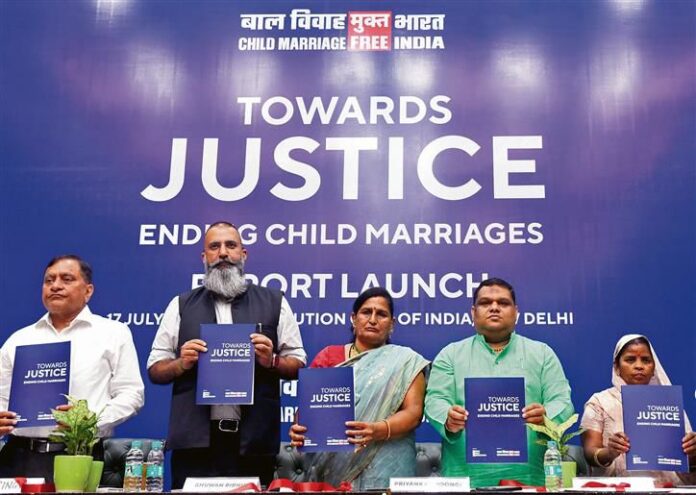Child marriage has long been a critical social issue in India, particularly in states like Assam, where traditional practices and socio-economic factors often drive young girls into early marriages. However, recent statistics indicate a significant drop in these practices. Following a rigorous crackdown by the state government, Assam has witnessed an 81% decrease in child marriages, a milestone in the fight against this deep-rooted issue.
Assam, a state in northeastern India, has historically seen high rates of child marriages. According to data from the National Family Health Survey (NFHS-5), about 31.8% of women aged 20-24 years were married before the age of 18. The reasons for this are multifaceted, ranging from poverty and lack of education to societal pressures and deeply ingrained cultural norms. Child marriage not only robs young girls of their childhood but also exposes them to numerous risks. These include early pregnancy, which often leads to health complications, a higher risk of domestic violence, and the perpetuation of poverty cycles. Additionally, it denies them educational opportunities, thus limiting their potential and future prospects.
The dramatic decline in child marriages in Assam can be attributed to a comprehensive and multi-pronged strategy implemented by the state government. The crackdown began with stringent law enforcement and community engagement initiatives aimed at curbing this illegal practice. One of the key strategies was the enforcement of existing laws against child marriage. The Prohibition of Child Marriage Act, 2006, which sets the minimum age of marriage at 18 for women and 21 for men, became a focal point for authorities. The state police launched a special drive to identify and take action against those involved in child marriages. This led to the arrest of several individuals, including parents, community leaders, and even religious leaders who facilitated such unions.
Simultaneously, the government recognized the need for community involvement and awareness. Various campaigns were launched to educate the public about the detrimental effects of child marriage. These campaigns involved local leaders, educators, and NGOs working at the grassroots level to change mindsets and encourage communities to prioritize education and health over early marriages. Another critical aspect of the crackdown was the emphasis on education and empowerment. Programs were introduced to keep girls in school and to provide them with vocational training. Scholarships and financial incentives were offered to families to support the education of their daughters. By empowering girls with education and skills, the government aimed to reduce their vulnerability to child marriage.
The government also set up support systems for at-risk girls. These included helplines, counseling centers, and safe homes for those who faced the threat of child marriage. By providing a safety net, the state aimed to offer these girls an alternative and a means to escape the cycle of early marriage and its associated problems. The impact of these measures has been substantial. The 81% decrease in child marriages is a testament to the effectiveness of a holistic and determined approach. The decline not only reflects in the numbers but also in the changing attitudes within communities. There is now a growing recognition of the importance of education and the potential of girls beyond their traditional roles.
However, while these achievements are significant, the fight against child marriage is far from over. Sustaining this progress will require continuous effort and vigilance. The government needs to ensure that the laws are consistently enforced and that community awareness remains high. Additionally, addressing the underlying socio-economic factors such as poverty and lack of education will be crucial in eradicating child marriage completely.
The substantial decrease in child marriages in Assam is a beacon of hope and a model for other regions grappling with similar issues. It demonstrates that with concerted effort, legal enforcement, and community involvement, it is possible to challenge and change deep-seated cultural practices. As Assam continues on this path, it is imperative to maintain momentum and focus on the holistic development of girls, ensuring they have the freedom and opportunity to shape their futures.




